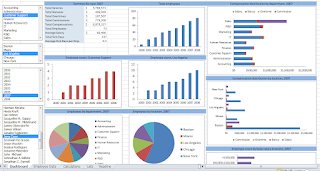ZSOIL v23.54 [Size: 1.03 GB] ... ZSOIL is the Windows-Based Finite Element Software offering a unified approach to numerical simulation of soil and rock mechanics, above & underground structures, excavations, soil-structure interaction and underground flow, including dynamics, thermal and moisture migration analysis. ZSoil is available for Windows 10&11.
ZSOIL is the first integrated computer code that offered a unified approach to most of the natural processes encountered in geotechnical and foundation engineering, including stability, consolidation, creep and underground flow, excavations and soil-structure interactions. Typical engineering problems that are being handled worldwide with ZSOIL are: foundation and earthwork construction, include tunnels, underground storage facilities, metro stations, mining, cut or fill in highways, railroads, dams, temporary and final retaining structures, water-front and excavation systems with complex excavation sequences, hydraulic structures, and buildings.
ZSOIL is a continuously upgraded geotechnical, foundation and underground flow engineering software based on the finite-element method and written in the MS-Windows environment. The program has been used with great success in forensic analysis and design studies, covering without exception all possible scenarios encountered in real world case studies. ZSOIL has been developed at Zace Services Ltd since 1982. The latest versions were developed by a team led by A.Truty, K.Podles & Th.Zimmermann, with research experience at the Swiss Federal Institute of Technology (EPFL), U.C.Berkeley, and Caltech.
ZSOIL ANALYSES: Nonlinear small and large displacements. Axi-symmetric, Plane strain, and 3D drivers offering single and 2-phase analyses, including partial saturation, with any combination of the algorithmic options that are listed below. + Automatic evaluation of initial stress conditions including steady state flow: combination of gravity and initial-stresses allows an automatic reproduction of the most complex initial state conditions, including existing constructions. +
Stability analysis: through C-phi reduction and stress level algorithms lead to a reliable assessment of safety factors and failure surfaces for the most general problem geometries. Simpler and more general than usual sliding surface approaches. Possibility to analyze safety with respect to local material properties or features like contact surfaces. Ultimate load and deformation analysis.
Prestress conditions (anchors): Simulation of Excavation, construction stages, simulation of fill for cut and cover construction, combined with any sequence of drivers, allowing removal or addition of construction parts, loads, boundary conditions etc, unloading control capability in order to simulate 3-dimensional effects in 2D. Continuous safety assessment.
Consolidation, volumetric and deviatoric creep and swelling (time dependent processes). Flow, steady or transient, fully or partially saturated, with time dependent boundary conditions; fullly arbitrary flow conditions with free surface, seepage surfaces, as well as rain inflow, impermeable zones, coupled or uncoupled with solid deformation can easily be accounted for. Thermal/or moisture migration analysis: Transient thermal/or moisture migration analysis can be performed as a preprocessing in order to define temperature time-histories to be accounted for later in the mechanical analysis.
Dynamic time integration and Pushover analysis for structures, including soil structure interaction.
Constitutive models for continuum include: elastic, Drucker-Prager, Mohr-Coulomb, Hoek-Brown, Multilaminate, Modified Cam-Clay, HS_small strain, Cap model, Densification model, Menétrey-Willam, damage-plastic concrete model (with fire extension), and a Virtual Lab to assist users in data preparation.
ZSOIL uses exclusively linear elements, enhanced (BBAR, enhanced strains, stabilised formulation) to overcome locking phenomena. Finite elements include: truss, cable, beam, plate, shell, thick shell and continuum for single and 2-phase media.








